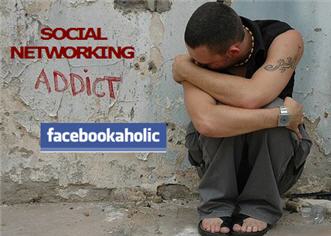Symptoms Include: uncontrollable stalking, unintelligent use of new age acronyms in real life (e.g. OMG, WTF, LOL), unwanted relationships with people you have never actually met, awkward wall posts from parents that begin with she/he is cute and end with Love, Mom, emotional breakdowns due to an ex’s overwhelming happiness that is apparent on profile (see stalking), and in some rare cases deactivation from society.
If you are between the ages of 12 and 80, it is possible that you are a candidate for SNS – if you are between the ages of 13 and 35 it is highly probable. If you fall within this age range and have noticed that you suffer from three or more of the symptoms listed above, do not be alarmed, we are here to help.
The SNS pandemic began around 2004 when Mark Zuckerberg released Facebook and while over 300 million have been exposed to SNS only a select group is truly affected. In May of this year around 6 million people were cured of the disease and the future looked bright, until experts realized that the technology that caused the syndrome was being multiplied.
With the growing popularity of Google+ (or G+), it is possible that many more will become infected with SNS. Here are some ways you can prevent or take control of Social Networking Syndrome:
1. Learn self-control
As technology grows it becomes more and more difficult to have self-control or any form of patience. Too much of anything can be dangerous. We recommend that you restrict your social networking time by allowing at least one hour between checking your Twitter, Facebook or G+ account.
2. Go outside
NOTE: Do not bring laptop.
Remember back in the day when you used to beg your parents to let you go outside and play? Now that you are older you can do this all by yourself. Get some fresh air, notice your environment. Don’t allow yourself to think about running home and checking your newsfeed.
3. Try actually logging out
If you have SNS it is very likely that you do not log out of your network when you navigate somewhere else or leave your computer. Try logging out and you will be surprised at how making that one little decision will send a signal to the brain that you are really done with this for a while. This hasn’t been scientifically proven yet, but it should be.
4. Don’t allow updates to be sent to your phone
When your network sends you what others are doing or what is going on when you are not there, you lose all control. It is so easy to turn off, and once you do, you probably won’t even notice that you haven’t received 20 new messages in 45 minutes.
5. Try to meet people in person
NOTE: Avatars are not real people.
Trying to maintain all of your relationships on your social network is not the same as actually spending quality time with your loved ones. We propose that you set up a date with a friend and meet each other in the real world. Once you get back out there, you will remember what it is like to use all of your five senses again and you just might have a shot at a normal life.







Pingback: How Much Social Media Is Too Much Social Media? | DigitalSherpa.com
Really made me laugh this post!
But its true so many people are becoming addicted to social media sites!
Thanks for posting
Unfortunately you’re right… we are addicted to social media, all of us, people and companies. I don’t know what ingredients facebook used. Maybe that’s the reason why we feel that our time passes so quick with doing… nothing.
I like your article about google monopoly too.
The funny part is that uncontrollable stalking is almost socially acceptable now. Funny but completely true post.